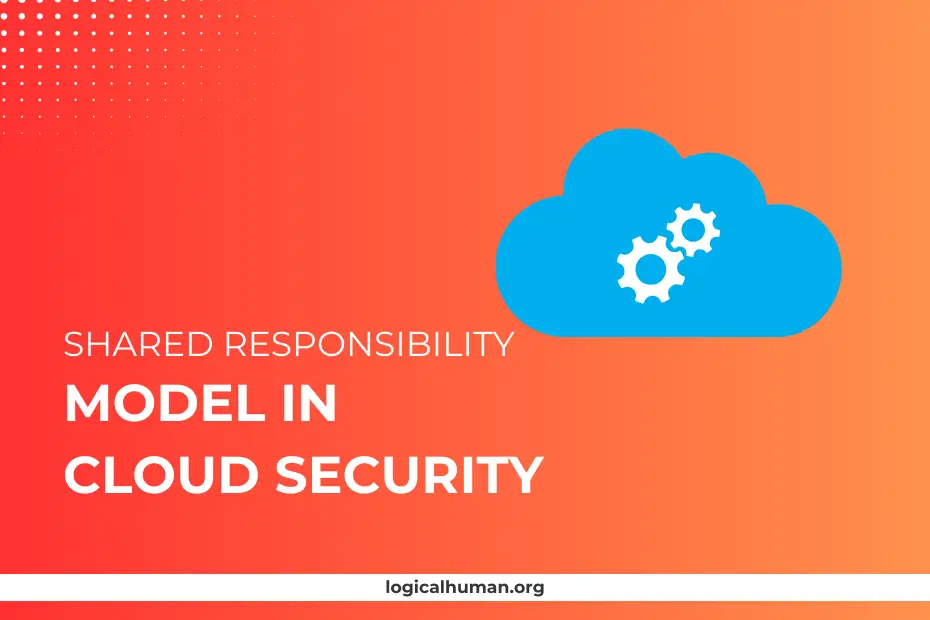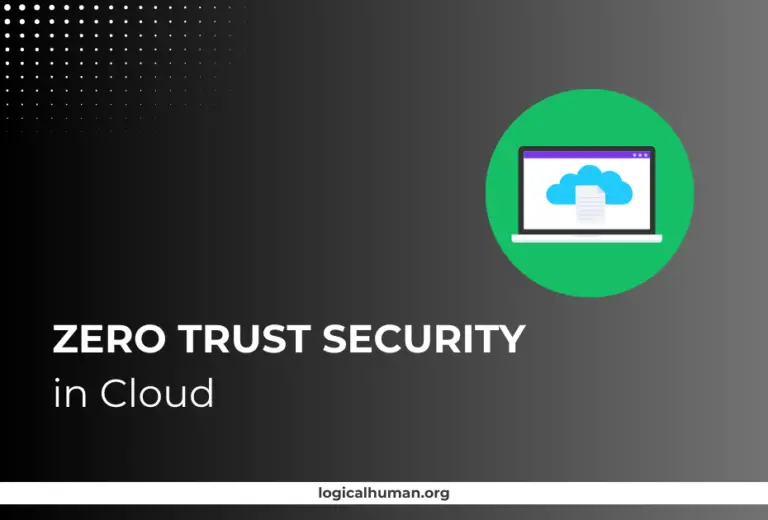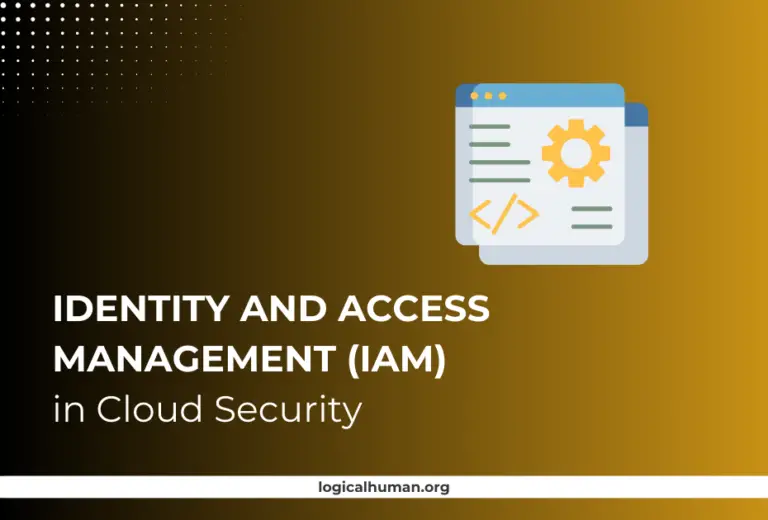The rise of cloud computing has revolutionized how businesses operate, offering scalability, flexibility, and cost savings. But with these benefits come new security challenges. Ever wondered who is responsible for protecting your data in the cloud? This is where the Shared Responsibility Model comes into play.
What is Cloud Security?
Cloud security refers to a set of policies, technologies, applications, and controls used to protect virtualized IP, data, applications, services, and the associated infrastructure of cloud computing. It is designed to ensure that data is stored and handled securely, and that the users and systems are protected from potential threats.
Why is Cloud Security Important?
With the increasing volume of sensitive data being stored on cloud platforms, security breaches have become a significant concern. Effective cloud security prevents unauthorized access, data loss, and service disruptions. It also ensures compliance with industry standards and regulations, which is crucial for maintaining trust and legal accountability.
What is the Shared Responsibility Model?
The shared responsibility model is a fundamental framework in cloud security that delineates the roles and responsibilities of cloud service providers (CSPs) and cloud customers. It clarifies who is accountable for securing which parts of the cloud environment, helping to prevent security gaps.
Definition and Concept
In essence, the shared responsibility model divides security tasks between the CSP and the customer. The provider manages the security of the cloud (infrastructure, hardware, and software), while the customer is responsible for the security in the cloud (data, access management, and applications).
The Evolution of the Shared Responsibility Model
Initially, businesses were hesitant to adopt cloud computing due to security concerns. Over time, CSPs developed this model to build trust and clarify security obligations. As a result, organizations can now leverage cloud solutions with a clear understanding of their security responsibilities.
Roles and Responsibilities in Cloud Security
Responsibilities of Cloud Service Providers (CSPs)
CSPs, like Amazon Web Services (AWS), Microsoft Azure, and Google Cloud, are responsible for the security of the underlying infrastructure. This includes the hardware, software, networking, and facilities that run cloud services. They ensure that the cloud infrastructure is robust against threats, breaches, and natural disasters.
Responsibilities of Cloud Customers
Customers, on the other hand, are responsible for managing access to their cloud resources, securing data, configuring settings correctly, and monitoring activities. They must implement security measures such as data encryption, identity management, and regular audits to protect their applications and data within the cloud environment.
| Responsibility Area | IaaS (Infrastructure as a Service) | PaaS (Platform as a Service) | SaaS (Software as a Service) |
|---|---|---|---|
| Physical Data Center Security | Cloud Service Provider | Cloud Service Provider | Cloud Service Provider |
| Network Infrastructure Security | Cloud Service Provider | Cloud Service Provider | Cloud Service Provider |
| Virtualization Layer Security | Cloud Service Provider | Cloud Service Provider | Cloud Service Provider |
| Operating System Security | Customer | Cloud Service Provider | Cloud Service Provider |
| Application Security | Customer | Customer | Cloud Service Provider |
| Data Security | Customer | Customer | Customer |
Components of the Shared Responsibility Model
The shared responsibility model can vary depending on the type of cloud service—Infrastructure as a Service (IaaS), Platform as a Service (PaaS), or Software as a Service (SaaS). Let’s break down these components.
Security ‘Of’ the Cloud vs. Security ‘In’ the Cloud
- Security ‘Of’ the Cloud: This refers to the CSP’s responsibility for protecting the infrastructure that runs cloud services.
- Security ‘In’ the Cloud: This refers to the customer’s responsibility to secure their data, applications, and configurations within the cloud.
Infrastructure as a Service (IaaS) Responsibilities
In IaaS, customers have control over the operating systems, storage, and network configurations. The CSP is responsible for securing the underlying cloud infrastructure, but customers must secure their applications and data.
Platform as a Service (PaaS) Responsibilities
In PaaS, the CSP manages more of the stack, including the operating system and runtime. The customer is responsible for application logic and data, including access management and identity security.
Software as a Service (SaaS) Responsibilities
In SaaS, the CSP manages almost everything, from the application to the underlying infrastructure. The customer’s responsibility is limited to user data and access controls. However, misconfigurations in user settings can still pose significant security risks.
Why the Shared Responsibility Model Matters
Understanding and implementing the shared responsibility model is crucial for several reasons.
Avoiding Misconfigurations and Data Breaches
Misconfigurations are one of the leading causes of data breaches in the cloud. The shared responsibility model helps organizations clearly define their security tasks, reducing the risk of errors and vulnerabilities.
Ensuring Compliance and Legal Accountability
The model helps organizations comply with industry regulations such as GDPR, HIPAA, and PCI-DSS by clarifying which party is responsible for various compliance-related tasks. This reduces legal risks and ensures that all security measures are adequately implemented.
Common Misunderstandings about the Shared Responsibility Model
Despite its importance, the shared responsibility model is often misunderstood, leading to security gaps and compliance issues.
“The Cloud Provider Handles Everything” Myth
Many businesses mistakenly believe that their CSP handles all security aspects. In reality, while CSPs provide robust infrastructure security, customers must protect their data, applications, and network configurations.
Confusion Between Security and Compliance
Security and compliance are not the same. While CSPs provide the infrastructure for secure operations, meeting regulatory requirements remains the customer’s responsibility.
Implementing the Shared Responsibility Model
To effectively implement the shared responsibility model, organizations need to understand their role and take proactive measures.
Identifying Your Responsibilities
The first step is to identify which parts of your cloud environment fall under your responsibility. This may include data encryption, access controls, and application security.
Best Practices for Cloud Security
Securing User Access and Identity
Use multi-factor authentication (MFA) and strong password policies to secure user access. Implement least privilege access controls to minimize the risk of unauthorized access.
Data Encryption and Management
Encrypt data at rest and in transit to protect it from unauthorized access. Regularly back up data to prevent loss and ensure quick recovery in case of a breach.
Continuous Monitoring and Incident Response
Implement continuous monitoring to detect and respond to security incidents in real-time. Use automated tools to analyze logs and detect anomalies that could indicate a security breach.
Case Studies: Shared Responsibility Model in Action
Case Study 1: Misconfigured Cloud Storage
In 2019, a large company suffered a data breach due to a misconfigured Amazon S3 bucket. The CSP provided the infrastructure, but the customer failed to secure their data, resulting in the exposure of sensitive information.
Case Study 2: Effective Use of the Shared Responsibility Model
Another organization successfully prevented a security breach by implementing a robust cloud security strategy. They used CSP-provided tools and third-party solutions to monitor and secure their environment, demonstrating the effectiveness of the shared responsibility model.
Tools and Resources for Cloud Security
Security Tools Provided by CSPs
Most CSPs offer a suite of security tools, such as AWS CloudTrail, Azure Security Center, and Google Cloud Security Command Center, to help customers monitor and secure their cloud environments.
Third-Party Security Solutions
Third-party solutions like CloudGuard, Prisma Cloud, and CrowdStrike can provide additional security features, including advanced threat detection and automated incident response.
Challenges and Limitations of the Shared Responsibility Model
Despite its benefits, the shared responsibility model has its challenges.
The Complexity of Multi-Cloud Environments
Managing security across multiple cloud platforms can be complex. Each CSP has its own tools and policies, making it difficult to maintain consistent security standards.
Human Error and Lack of Awareness
Many security incidents are caused by human error, such as misconfigurations or weak passwords. Ongoing training and awareness programs are essential to minimize these risks.
Future Trends in Cloud Security
Cloud security is continuously evolving. Here are some future trends to watch.
AI and Machine Learning in Cloud Security
AI and machine learning are being integrated into cloud security tools to provide advanced threat detection and automated response capabilities, reducing the burden on security teams.
Zero Trust Security Model
The zero trust model assumes that no entity—inside or outside the network—is trusted by default. This approach is gaining traction in cloud security to prevent unauthorized access and reduce attack surfaces.
Conclusion
The shared responsibility model is a cornerstone of cloud security. By clearly defining the roles and responsibilities of CSPs and customers, it helps organizations build a secure cloud environment. However, it is crucial to understand and implement this model effectively to avoid security breaches and ensure compliance. As cloud adoption continues to grow, so too will the importance of shared responsibility in maintaining robust cloud security.
FAQs
1. What is the shared responsibility model in cloud security?
The shared responsibility model outlines the security responsibilities of both the cloud service provider and the customer. It ensures that both parties understand their roles in protecting cloud data and infrastructure.
2. Who is responsible for data security in the cloud?
In the shared responsibility model, the customer is responsible for securing their data and applications, while the CSP is responsible for the security of the cloud infrastructure.
3. What happens if the shared responsibility model is not followed?
Failure to adhere to the shared responsibility model can lead to security gaps, resulting in data breaches, compliance violations, and financial penalties.
4. How can organizations ensure compliance with the shared responsibility model?
Organizations can ensure compliance by clearly defining roles, using security tools provided by CSPs, implementing best practices, and regularly auditing their cloud environment.
5. What are the common challenges in implementing the shared responsibility model?
Common challenges include managing multi-cloud environments, human errors, and lack of awareness or misunderstanding of the model’s requirements. Regular training and use of automated security tools can help overcome these challenges.



